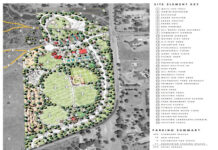The county of San Diego will be establishing urban agriculture incentive zones in the unincorporated portion of the county.
The San Diego County Board of Supervisors voted 4-0 November 14, with Kristin Gaspar absent, to direct the county’s chief administrative officer to establish an urban agriculture incentive zone within the unincorporated county; to initiate the process through the preparation of a draft ordinance; to provide a detailed assessment of blighted properties which could be suitable for urban agriculture; to analyze an appropriate fee structure and complete any analysis required by the California Environmental Quality Act; and to return back to the board within 15 months with a completed program to be reviewed and considered by the Board of Supervisors. The Nov. 14 vote also appropriated $135,000 of general fund balance to cover staff costs for the development of the program.
“This is a good program,” said Supervisor Ron Roberts.
In 1965 the state legislature passed the Williamson Act which allows landowners to sign contracts agreeing to restrict their
land to agricultural or other open space use (including recreational use or a combination of agricultural, open space, and recreational use) in exchange for having the land assessed on its restricted use rather than its market value. The lower assessment reduces property tax liability for the landowner, and the Williamson Act included a provision providing partial reimbursement by the state to the counties for the lost property tax revenue.
In 2013 State Assemblyman Phil Ting, whose district includes the western part of the city of San Francisco as well as some of San Francisco’s south suburbs, authored Assembly Bill 551 to create urban agriculture incentive zones. The bill initially passed both the State Assembly and the State Senate without any votes against it, although when the Assembly approved the Senate version the vote for passage was 69-6. Governor Brown signed AB 551 into law in September 2013.
AB 551 authorizes cities and counties to enter into contracts with landowners to restrict the use of vacant, unimproved, or otherwise blighted land for small-scale production of agricultural crops and animal husbandry. The contract must be for at least five years and the property must be at least one-tenth of an acre (approximately 4,020 square feet) but no more than three acres. The county assessor will value property under such a contract based on the average per-acre value of irrigated cropland in California (which was $12,000 per acre in 2014) and adjustments to that per-acre value can be made for easements, environmental constraints, or other restrictions. The Urban Agriculture Incentive Zones Act defines “urban” as an area within the boundaries of an urbanized area including at least 250,000 people, so land in a small town within an urban metropolitan area is eligible.
No dwellings may be built on the property while it is under contract, although structures which support agriculture such as tool sheds, greenhouses, produce stands, and instructional space are allowed. Both commercial and non-commercial agriculture are permitted on land with urban agriculture incentive zone contracts. A contract can include a prohibition on the use of pesticides or fertilizers although pesticides and fertilizers allowed by the U.S. Department of Agriculture’s National Organic Program would be permitted.













